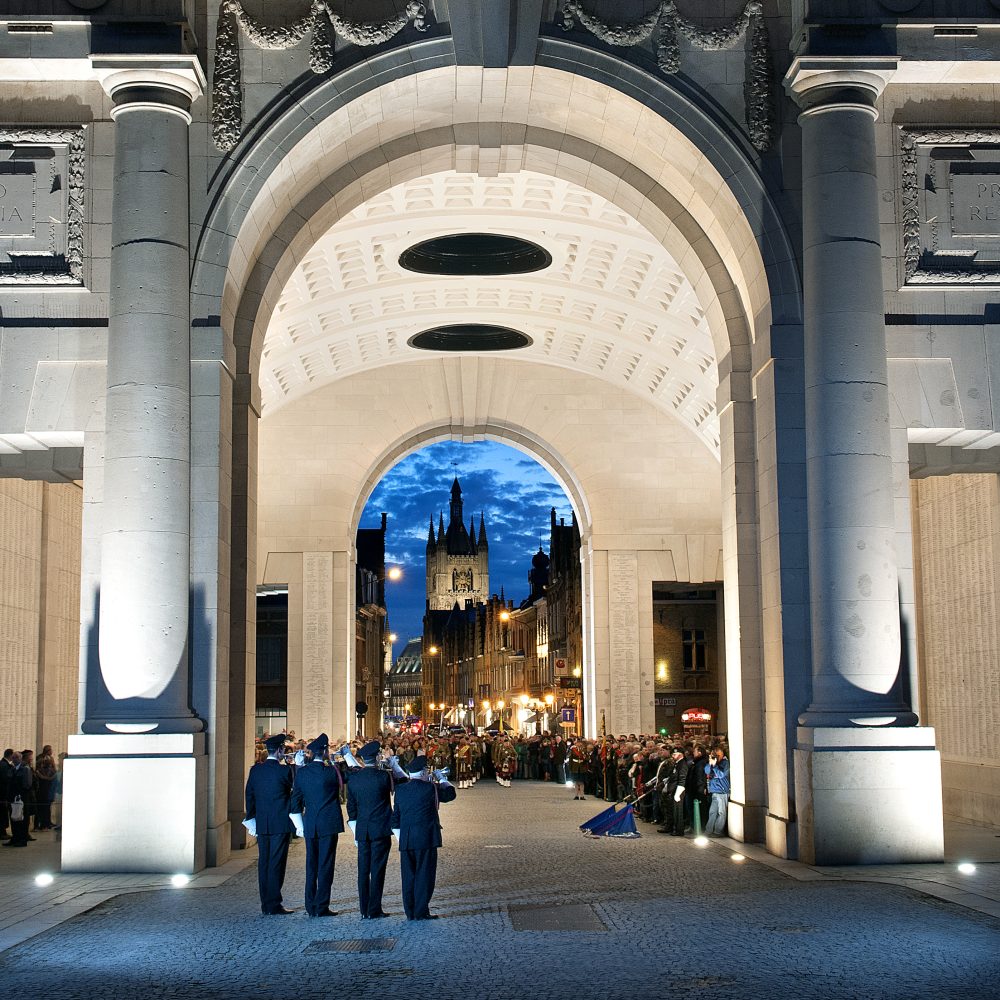A humbling journey through our peace heritage
Flanders Fields is a place of remembrance. Hundreds of war cemeteries, monuments and memorials keep the memory of the First World War alive.
As evening falls over Ypres, quiet murmurs echo beneath the imposing Menin Gate. At exactly 8 p.m., they fade away. The buglers of the Last Post Association raise their instruments to their lips. The warm, melancholy tones linger beneath the grand stone arches, in a moving, daily tribute to the fallen soldiers of the First World War. This ritual has been repeated every evening since 1928. On November 11th, Armistice Day, the poignant sound of the bugles resonates even more deeply, as all pause to remember the end of WWI and the millions of lives it claimed.
UNESCO World Heritage in the Westhoek
In Flanders Fields, the memory of that war is never far away. This region in western Flanders was one of the most important battlefields of the First World War. More than a century later, the landscape still tells those stories. In the Westhoek, 27 remembrance sites have been recognized by UNESCO as tangible world heritage. They form part of a collection of 139 historic memorials across Flanders (27), Wallonia (16) and France (96).
The Menin Gate in Ypres, once a front-line town, is one of these sites, but there is so much more to discover. The Tyne Cot Cemetery is the largest Commonwealth war cemetery on the European mainland. It is perhaps the most powerful witness to the devastating Battle of Passchendaele, and the final resting place of some 12,000 soldiers. The Brooding Soldier stands as a solemn tribute to the Canadian troops who fell during the Second Battle of Ypres, where 2,000 soldiers lost their lives in the first gas attack.

A story told in many ways
The Westhoek tells its story not only through cemeteries and monuments, but also through a handful of remarkable museums. The In Flanders Fields Museum, housed in the rebuilt Cloth Hall of Ypres—a powerful symbol of wartime suffering and rebirth—shares the human story of the First World War along the West Flemish front. The main theme of the Passchendaele Museum is the Battle of Passchendaele, one of the most devastating confrontations of WWI. Nearly 600,000 soldiers were killed for a territorial gain of barely eight kilometers. An evocative interactive exhibition brings to life the daily realities of those who lived and fought on the front line.
Flanders Fields tells a universal story of war and peace. At the same time, it honors the many symbols and memories shared by all nations involved. Here, you can explore remembrance in your own way and at your own pace—on themed journeys such as The American Tour, The British Tour, and many more. Lest we forget.
